In our blog you can find articles with useful information about the Garden of Virgin Mary, the Monasteries, Cells and Sketes, the routes, but also how to visit Holy Mount Athos. In addition, here you will find authentic monastic recipes, fasting and healthy, as well as prayers for various occasions!
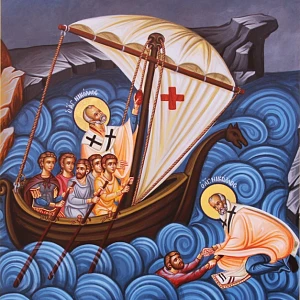
Saint Nicholas the Myrrhbearer, was born in the city of Patara, located in Asia Minor, during the 3rd century AD to wealthy and devout Christian parents, who passed on to him the values of Christianity. The exact date of his birth remains unknown, but we know that he lived during the reigns of Diocletian (284-304 AD), Maximian (286-305 AD), and Constantine the Great.
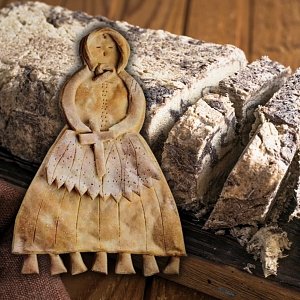
The period of Great Lent dates back to the 4th century AD and constitutes the oldest fast of the Orthodox Church. During Lent, the faithful prepare themselves spiritually and physically for the great event of the Resurrection of our Lord Jesus Christ. The fasting that is followed during Great Lent is strict, with specific rules, as well as some exceptions. During the fasting period of Great Lent, the consumption of meat and fish is prohibited, as well as all dairy products. Additionally, eggs, wine and oil are also prohibited.
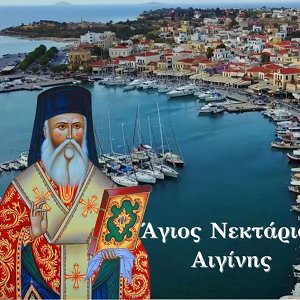
Saint Nektarios was born on October 1, 1846 AD. in Silivria in Thrace by Demos and Vasiliki Kefala and was the fifth of their six children. His secular name was Anastasios. At the age of 14, he moved to Constantinople, where he worked as a clerk and then as a teacher at the school of Metochi of the Holy Sepulcher. Afterwards, he went to Chios, where he served as a public teacher in the village of Litheio from 1866 AD. until 1876 AD. In 1876 AD he became a monk in the New Monastery of Chios with the name Lazarus. A year later, on January 15, 1877 AD. he was ordained a deacon with the name Nektarios, by the Metropolitan of Chios Gregorios (1860 - 1877 AD), and assumed the secretariat of the Metropolis.
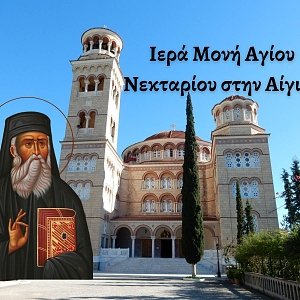
The history of the monastery is lost in the Byzantium era, where there was a monastery dedicated to Zoodochos Pigi at that point. Osia Athanasia had lived as an ascetic in this monastery, but over the years it was abandoned. In 1904, Saint Nektarios decided to restore the monastery and house the Holy Trinity Monastery there. The works for the restoration of the Monastery lasted from 1904 to 1907. A year later, in 1908, Saint Nektarios left the management of the Rizarei School and retired to the Monastery.
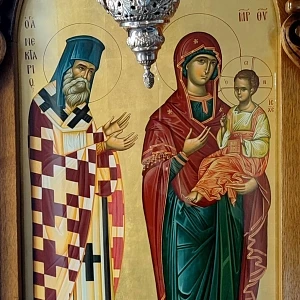
A unique hymn to Virgin Mary, a poem by Saint Nektarios, written after the appearance of Virgin Mary in the monastery of Aegina. According to tradition, Theotokos asked the Saint to write a special hymn, dedicated to her, and thus the famous hymn "Virgin Virgin Despoina" was created.

«You should respect your wives. If you don’t feel love, they will suffer and think that they are a means for your enjoyment, and they will feel terrible themselves... A woman wants love to be satisfied with her husband. She has a more delicate heart because she will raise children, and her condition is sensitive. She has tenderness. She doesn't want ribaldries and no dignities. That's why she gets hurt when they treat her like a ‘piece of meat’ and don’t care about her feelings.»
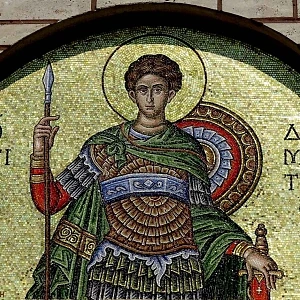
Saint Demetrios was born in Thessaloniki, Greece, between 280 - 284 AD. and lived in the period of the Emperors Diocletian and Maximian. He came from an aristocratic family and in a short period of time rose to the top ranks in the Roman army. In fact, at the age of 22 he received the rank of Chiliarch.
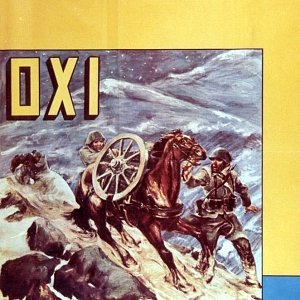
October 28, 1940 - the newspapers of the time captured from the first moment the rapid events of the war and political events. Announcements, important decisions, developments at the front and rousing slogans filled the leaflets every day. Below, we've compiled the front pages of major and minor newspapers as published on October 28 and 29, 1940.
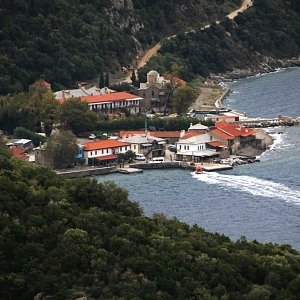
Important services such as the Port Authority, the Police Station, the Customs and the Post Office are located in Dafni, which serve the monks and pilgrims upon their arrival or departure from Mount Athos. Here, in Dafni, is our store Monastiriaka (mount athos shop) and we are the oldest company in Greece for gathering and distributing monastic products to the whole world. We make shipments all over Greece and to more than 100 countries around the world.
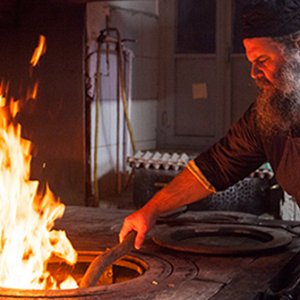
Based on our store, which is located in Daphne, the seaport of Mount Athos, we search , try and gather handicrafts of great quality and products which are mainly produced by the monks who live both in the cells and the monasteries of Mount Athos.